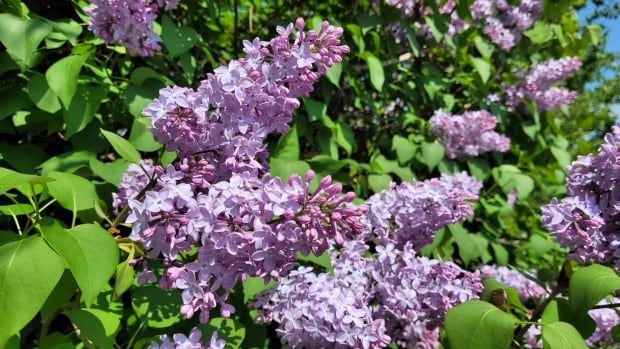When Shannon Waters was moving to Prince George, in the central Interior region of northern British Columbia, flowers were not the first thing on her mind.
“I thought it was this cold place dominated by the smell of pulp mills,” she said, admitting some trepidation about coming to the community for a job opportunity.
But she soon discovered another smell dominating her downtown neighbourhood: lilacs, growing on a hedge at the edge of her yard — along with dozens of other trees and bushes that dominate the city’s landscape in mid-spring.
“Just waking up to the smell of lilacs on a cool, but not cold anymore, morning … is just a lovely sensory memory that I still have.”
Waters is now in Victoria and has also lived in Vancouver, where cherry blossoms blooming as early as March are heralded as the start of spring and often dominate headlines.
But she argues the arrival of lilacs in colder climates later in the year deserves just as much attention.
“The lilacs in Prince George, at least the scent of them, is much more dramatic than the cherry blossoms are down south,” she said.
“They are such a fantastic opportunity to celebrate: Spring is here. Summer is on its way.”
A hardy perennial
Lilacs are flowering plants that come in the form of shrubs or trees, originally grown in the Balkans region of southeastern Europe as well as parts of Asia.
Over the centuries, they were developed into multiple strains ranging in colours from deep purples to bright pinks and whites — up to hundreds of different varieties, depending on how they are classified.
See photos of lilacs in bloom across Canada:
About three dozen versions are visible along the “Lilac Walk” at the David Douglas Botanical Garden in Prince George, where master gardener Trine Helsoe explained why the plants are so prominent in Canadian communities built in the early- and mid-20th century.
“Back when these older neighbourhoods were being built, they had a very limited number of plants that they could grow,” she said. “Lilacs would have been one of the most exotic plants available.”
They are also hardy, surviving well in cold climates and managing to grow on empty lots or in parks with little maintenance.
The smell of home
In fact, they are so dominant in some communities that Jae Waller was shocked to discover they aren’t a native species in British Columbia.
Waller is a science fiction author based in Australia but originally from Prince George who authors a series of books set in an alternative version of British Columbia where England and France never became dominant colonial players in what is now Canada.

In researching her books, Waller tries to remove plants, species and cultural items that were introduced to the region by European settlers but found she had to make an exception for lilacs, which have become a major plot point in the series.
“I had such strong memories of them that I had to get them into my book somehow,” she said.
“Every time I smell them, I think of home … It just seems iconic to the region.”
B.C. is not the only place where lilacs are celebrated. The Royal Botanical Gardens in Hamilton, Ont., holds a lilac celebration every May, as does the Harvard University arboretum in Boston and the city of Rochester, N.Y. Lombard, Ill., calls itself “The Lilac Village,” and Spokane, Wash., lays claim to being “The Lilac City.”
But Waters says while holding festivals can be a nice way to mark the transition to summer, especially in places with deep, long winters, there’s something to be said for keeping celebrations low-key.
“I’m a big fan of … walking somewhere and you notice a gorgeous lilac bush and enjoying it in the moment without having to make a big production out of everything.”


